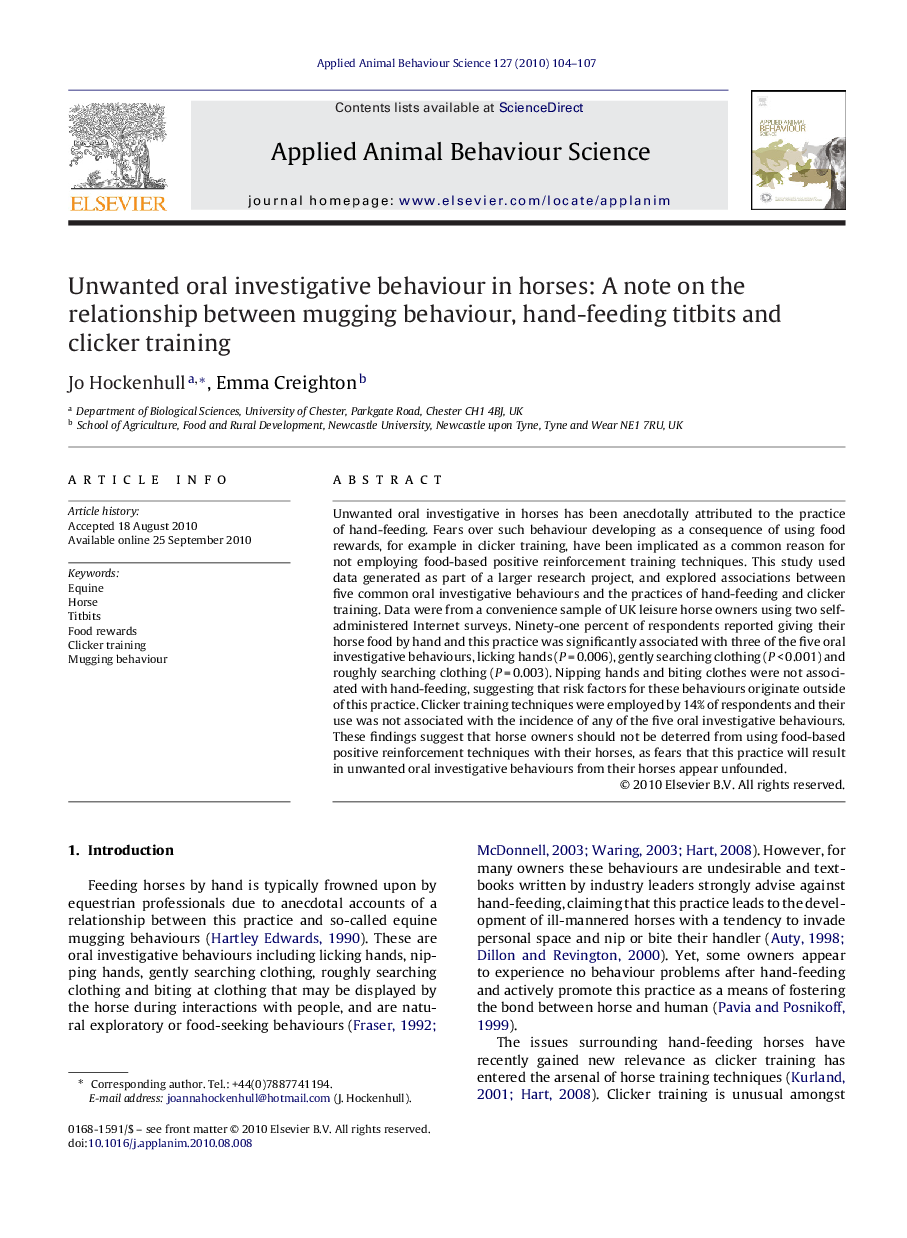| کد مقاله | کد نشریه | سال انتشار | مقاله انگلیسی | نسخه تمام متن |
|---|---|---|---|---|
| 4523300 | 1625394 | 2010 | 4 صفحه PDF | دانلود رایگان |

Unwanted oral investigative in horses has been anecdotally attributed to the practice of hand-feeding. Fears over such behaviour developing as a consequence of using food rewards, for example in clicker training, have been implicated as a common reason for not employing food-based positive reinforcement training techniques. This study used data generated as part of a larger research project, and explored associations between five common oral investigative behaviours and the practices of hand-feeding and clicker training. Data were from a convenience sample of UK leisure horse owners using two self-administered Internet surveys. Ninety-one percent of respondents reported giving their horse food by hand and this practice was significantly associated with three of the five oral investigative behaviours, licking hands (P = 0.006), gently searching clothing (P < 0.001) and roughly searching clothing (P = 0.003). Nipping hands and biting clothes were not associated with hand-feeding, suggesting that risk factors for these behaviours originate outside of this practice. Clicker training techniques were employed by 14% of respondents and their use was not associated with the incidence of any of the five oral investigative behaviours. These findings suggest that horse owners should not be deterred from using food-based positive reinforcement techniques with their horses, as fears that this practice will result in unwanted oral investigative behaviours from their horses appear unfounded.
Journal: Applied Animal Behaviour Science - Volume 127, Issues 3–4, November 2010, Pages 104–107